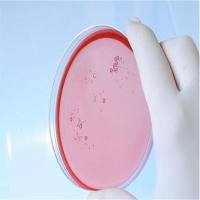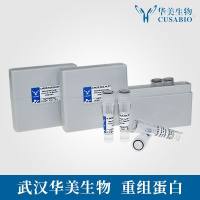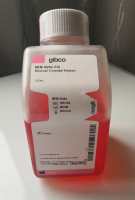Synthesis, Characterization, and Application of Substituted Pyrazolopyrimidine Nucleosides
互联网
- Abstract
- Table of Contents
- Materials
- Figures
- Literature Cited
Abstract
This unit describes, in detail, the preparation of 3?aminopropyl?substituted pyrazolo[3,4?d]pyrimidine analogs of the purines deoxyadenosine (dA) and deoxyguanosine (dG). Phosphoramidite reagents of these so?called aminopropyl?PPA and ?PPG nucleosides (AP?PPA and AP?PPG, respectively) allow introduction of amino linkers into internal positions of synthetic DNA strands. Synthesis of suitably protected AP?PPA and AP?PPG phosphoramidites are described. The stepwise alkynylation, hydrogenation, selective protection, and phosphoramidite synthesis is similar for both the PPA and PPG analogs. To demonstrate the application of these reagents, a protocol is given in which a simple DNA strand is synthesized and conjugated to a lipophilic activated ester (dabcyl?SE) to form a stable amide linkage. Utility of this chemistry for preparing internally modified DNA conjugates is discussed.
Table of Contents
- Basic Protocol 1: Preparation of Protected Aminopropyl‐PPG Phosphoramidite
- Basic Protocol 2: Preparation of Protected Aminopropyl‐PPA Phosphoramidite
- Basic Protocol 3: Synthesis of DNA Conjugates Using AP‐PPA and AP‐PPG Phosphoramidites
- Reagents and Solutions
- Commentary
- Literature Cited
- Figures
Materials
Basic Protocol 1: Preparation of Protected Aminopropyl‐PPG Phosphoramidite
Materials
Basic Protocol 2: Preparation of Protected Aminopropyl‐PPA Phosphoramidite
Materials
Basic Protocol 3: Synthesis of DNA Conjugates Using AP‐PPA and AP‐PPG Phosphoramidites
Materials
|
Figures
-

Figure 1.8.1 Preparation of AP‐PPG phosphoramidite (S.1 ). Abbreviations: DMF, N , N ‐dimethylformamide; DMTr⋅Cl, N , N ′‐dimethoxytrityl chloride. View Image -

Figure 1.8.2 Preparation of AP‐PPA phosphoramidite (S.2 ). Abbreviations: DMF, N , N ‐dimethylformamide; DMTr⋅Cl, N , N ′‐dimethoxytrityl chloride. View Image -

Figure 1.8.3 Synthesis of dabcyl conjugate at internal AP‐PPA linker position in a 9‐mer oligonucleotide. View Image -

Figure 1.8.4 Reversed‐phase HPLC chromatograms and UV‐Vis spectra of AP‐PPA‐modified oligonucleotides (S.9 ; dashed lines) and dabcyl conjugate (S.10 ; solid lines). The large difference in retention time simplifies isolation and analysis of the lipophilic conjugate. View Image
Videos
Literature Cited
| Literature Cited | |
| Beaucage, S.L. and Iyer, R.P. 1993. The synthesis of modified oligonucleotides by the phosphoramidite approach and their applications. Tetrahedron 49:6123‐6194. | |
| Cruickshank, K.A. and Stockwell, D.L. 1988. Oligonucleotide labeling: A concise synthesis of a modified thymidine phosphoramidite. Tetrahedron Lett. 29:5221‐5224. | |
| Goodchild, J. 1990. Conjugates of oligonucleotides and modified oligonucleotides: A review of their synthesis and properties. Bioconjugate Chem. 1:165‐187. | |
| Karamychev, V.N., Panyutin, I.G., Reed, M.W., and Neumann, R.D. 1997. Effect of radionuclide linker structure on DNA cleavage by 125I‐labeled oligonucleotides. Antisense Nucl. Acid Drug Dev. 7:549‐557. | |
| Kutyavin, I.V., Afonina, I.A., Mills, A., Gorn, V.V., Lukhtanov, E.A., Belousov, E.S., Singer, M.J., Walburger, D.K., Lokhov, S.G., Gall, A.A., Dempcy, R., Reed, M.W., Meyer, R.B.J., and Hedgpeth, J. 2000. 3′‐Minor groove binder‐DNA probes increase sequence specificity at PCR extension temperatures. Nucl. Acids Res. 28:655‐661. | |
| Milesi, D., Kutyavin, I.V., Lukhtanov, E.A., Gorn, V.V., and Reed, M.W. 1999. Synthesis of oligonucleotides in anhydrous dimethyl sulfoxide. Methods Enzymol. 313:164‐173. | |
| Petrie, C.R., Adams, A.D., Stamm, M., Van Ness, J., Watanabe, S.M., and Meyer, R.B.J. 1991. A novel biotinylated adenylate analogue derived from pyrazolo[3,4‐d]pyrimidine for labeling DNA probes. Bioconjugate Chem. 2:441‐446. | |
| Podyminogin, M.A., Meyer, R.B.J., and Gamper, H.B. 1996. RecA‐catalyzed, sequence‐specific alkylation of DNA by cross‐linking oligonucleotides. Effects of length and nonhomologous base substitutions. Biochemistry 35:7267‐7274. | |
| Seela, F. and Becher, G. 1998. Synthesis of 7‐halogenated 8‐aza‐7‐deaza‐2′‐deoxyguanosines and related pyrazolo[3,4‐d]pyrimidine 2′‐deoxyribonucleotides. Synthesis (9):207‐214. | |
| Seela, F. and Becher, G. 1999. Oligonucleotides containing pyrazolo[3,4‐d]pyrimidines: The influence of 7‐substituted 8‐aza‐7‐deaza‐2′‐deoxyguanosines on the duplex structure and stability. Helv. Chim. Acta 82:1640‐1655. | |
| Seela, F. and Zulauf, M. 1998. Synthesis of 7‐alkynylated 8‐aza‐7‐deaza‐2′‐deoxyadenosines via the Pd‐catalysed cross‐coupling reaction. J. Chem. Soc. Perkin Trans. 1(19):3233‐3240. | |
| Seela, F. and Zulauf, M. 1999. Synthesis of oligonucleotides containing pyrazolo[3,4‐d]pyrimidines: The influence of 7‐substituted 8‐aza‐7‐deazaadenines on the duplex structure and stability. J. Chem. Soc. Perkin Trans. 1(4):479‐488. | |
| Seela, F., Ramzaeva, N., and Becher, G. 1996. 7‐Deazapurine DNA: Oligonucleotides containing 7‐substituted 7‐deaza‐2′‐deoxyguanosine and 8‐aza‐7‐deaza‐2′‐deoxyguanosine. Collect. Czech. Chem. Commun. 61:258‐261. | |
| Tyagi, S., Bratu, D.P., and Kramer, F.R. 1998. Multicolor molecular beacons for allele discrimination. Nature Biotech. 16:49‐53. |









